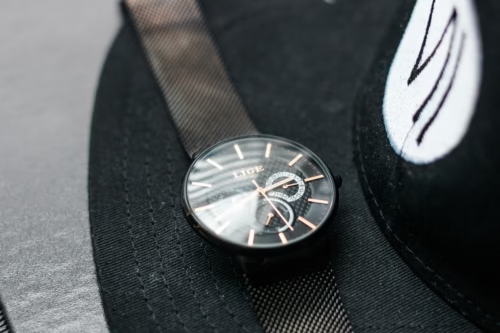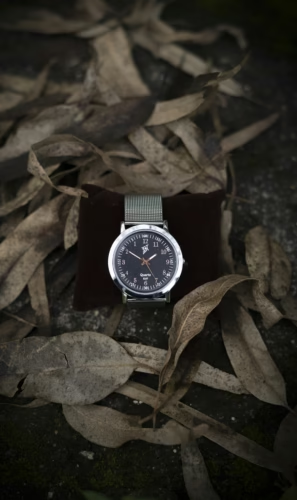Investment-Grade Watch Collection: What makes a watch collection stand out as investment-grade? For many enthusiasts and collectors, the allure of watches goes beyond mere aesthetics or functionality; it’s about owning a piece of history, a symbol of engineering excellence, and an asset that appreciates over time. Building a watch collection that not only brings satisfaction to the collector but also serves as a prudent investment requires a keen understanding of the market, a strategic approach to curation, and a perpetual sense of curiosity about horological artistry.
In recent years, the world of watches has seen a resurgence in interest as people seek tangible, enduring investments amidst fluctuating financial markets. A thoughtfully assembled collection can yield substantial returns if curated with knowledge and foresight. This article explores the expert techniques necessary for constructing such a collection, providing insights that blend historical context with present trends, key concepts, and practical applications. It is intended to guide both novice collectors beginning their journey and seasoned collectors refining their acquisition strategies.

Table of Contents
Historical Context of Watch Collecting
To appreciate the intricacies of building an investment-grade watch collection, understanding the historical context of horology is fundamental. The rich history of watchmaking dates back to the 16th century when clocks transitioned from cumbersome structures to portable timekeeping devices known as watches. Initially, watches were exclusive to the affluent elites, symbolizing status and driving innovation in craftsmanship.
Evolution of the Watch Industry
The watch industry has undergone significant transformation over the centuries, propelled by technological advancements and cultural shifts. From the precision of Swiss watchmaking to the emergence of quartz technology, each era left its indelible mark on the industry. These historical movements influenced watch designs, functionalities, and their status as collectibles. The advent of quartz technology in the 1970s, for instance, revolutionized accuracy and affordability, whereas the resurgence of mechanical watches in the 21st century highlighted a renewed appreciation for traditional craftsmanship.
Key Milestones
Among the key milestones in watch history are the introduction of the automatic movement in the 1920s, the advent of the waterproof watch, and the development of the chronograph function. These innovations not only elevated horological standards but also contributed to the desirability of certain models, enhancing their collectible value over time. Recognizing these transformations is crucial for collectors aiming to trace provenance and assess a watch’s historical significance within their collection.
Current Trends in the Watch Market
Today’s watch market is shaped by a fusion of tradition and modernity, where vintage-inspired designs coexist with cutting-edge technological innovations. As collectors seek to balance aesthetic appeal with investment potential, certain trends have emerged that define the contemporary collector’s landscape.
Popularity of Vintage Watches
One noticeable trend is the renewed interest in vintage watches. These timepieces carry an intrinsic link to the past and often boast superior craftsmanship, unique patinas, and historical narratives that new counterparts lack. Vintage watches from brands like Rolex, Patek Philippe, and Omega have become particularly coveted, often fetching high prices at auctions due to their rarity and storied past.
Rise of Independent Watchmakers
In addition to established luxury brands, independent watchmakers have garnered attention for their innovative designs and unconventional approaches. These artisans produce limited editions with distinct features, attracting collectors looking for exclusivity and uniqueness. The work of independent makers like Philippe Dufour or MB&F underpins the evolving tastes of collectors and their inclination toward personalized craftsmanship.
Key Concepts and Definitions
Navigating the world of watch collecting requires familiarity with industry-specific terms and concepts, which can often appear daunting to novices. Below are essential concepts that every watch collector should understand.
Horological Terminology
An understanding of horological terminology is indispensable. Terms like “complications,” “bezel,” “movement,” and “caliber” elucidate the technical aspects and value indicators within a watch. For instance, complications refer to additional functions beyond timekeeping, such as a moon phase or perpetual calendar, which can significantly enhance a watch’s desirability and value.
Evaluating Authenticity and Provenance
Authenticity is paramount in watch collecting. A collector must develop skills for distinguishing genuine watches from counterfeits, which involves scrutinizing serial numbers, craftsmanship quality, and original accessories, such as certificates of authenticity. Provenance, the origin and history of a watch, also plays a crucial role. Watches with documented history or previous ownership by notable figures often command higher values.
Building an Investment-Grade Collection
Constructing an investment-grade watch collection is both an art and a science, requiring a strategic approach rooted in market awareness and personal preference.
Establishing a Collection Strategy
A well-defined strategy is the cornerstone of successful watch collecting. Collectors should determine their focus, whether on specific brands, watch types, periods, or movements. A focused strategy aids in resisting impulsive purchases and navigating the diverse landscape of options.
- Access to Expertise: Engage with experts, join watch forums, and participate in collector events to enhance knowledge and ensure informed decisions.
- Market Research: Stay abreast of market trends, auction results, and expert analyses that guide value predictions.
- Diversification: Balance the collection between high-value, iconic models and lesser-known pieces with potential for appreciation.
Understanding Market Dynamics
The dynamics of watch valuation are influenced by several factors, including brand reputation, rarity, historical significance, condition, and demand. Iconic models like the Rolex Submariner or Patek Philippe Nautilus continue to attract investors due to their strong brand identifiers and consistent market performance. However, burgeoning demand for watches from independent brands and lesser-heralded models allows collectors to invest in undervalued timepieces with potential for future appreciation.

Comparing Different Perspectives
To solidify a balanced collection, collectors must consider varying perspectives and approaches in the industry. Here’s a comparison table showcasing contrasting attributes:
| Aspect | Established Brands (e.g., Rolex) | Independent Watchmakers (e.g., MB&F) |
|---|---|---|
| Production Scale | Mass production | Small batches |
| Design Innovation | Classic, evolutionary | Avant-garde, creative |
| Investment Potential | Stable appreciation | High-risk, high-reward |
| Collectability | Historically validated | Niche, trend-driven |
Impacts and Outcomes
The decision between investing in established brands and independent makers can influence a collection’s composition and value growth. Established brands offer historical validation and appreciation stability, while independent brands introduce unique designs with the possibility of significant value hikes for forward-thinking collectors.
Future Directions and Implications
The trajectory of the watch-collecting domain hints at exciting prospects, where digital innovation and traditional craftsmanship may intersect in unprecedented ways.
Predictions for the Future
As the digital age advances, innovations such as blockchain technology for enhancing provenance verification and digital platforms for trading and appraisal are expected to impact how collectors interact with the market. The intersection of smartwatch technology with luxury craftsmanship is likely to spawn hybrid models, balancing contemporary aesthetics and horological craftsmanship.
Societal Implications
The implications of these developments extend beyond individual collections, affecting societal perceptions of luxury and investment. Collectors will need to remain adaptable and aware of technological shifts, ensuring their collections endure both as symbols of heritage and as financial assets.

Conclusion
In summary, constructing an investment-grade watch collection demands a nuanced approach combining historical knowledge, market strategy, and an appreciation for both traditional and contemporary influences. The collector’s journey is enriched by understanding market dynamics, embracing a strategic yet flexible approach, and recognizing the evolving landscape shaped by independent craftsmanship and technological advancements. Ultimately, such a collection is not merely an assemblage of timepieces but a testament to horological heritage and an astute investment for the future. What do you think about these strategies for enhancing your watch collection?

